Tales of an Operator
est 1982 | SEO | Digital Marketing | Project Management | Collaboration | Positioning | Context
Tales of an Operator
est 1982 | SEO | Digital Marketing | Project Management | Collaboration | Positioning | Context
garretts marketing
Blog


October 2020
50 Thinking Frameworks
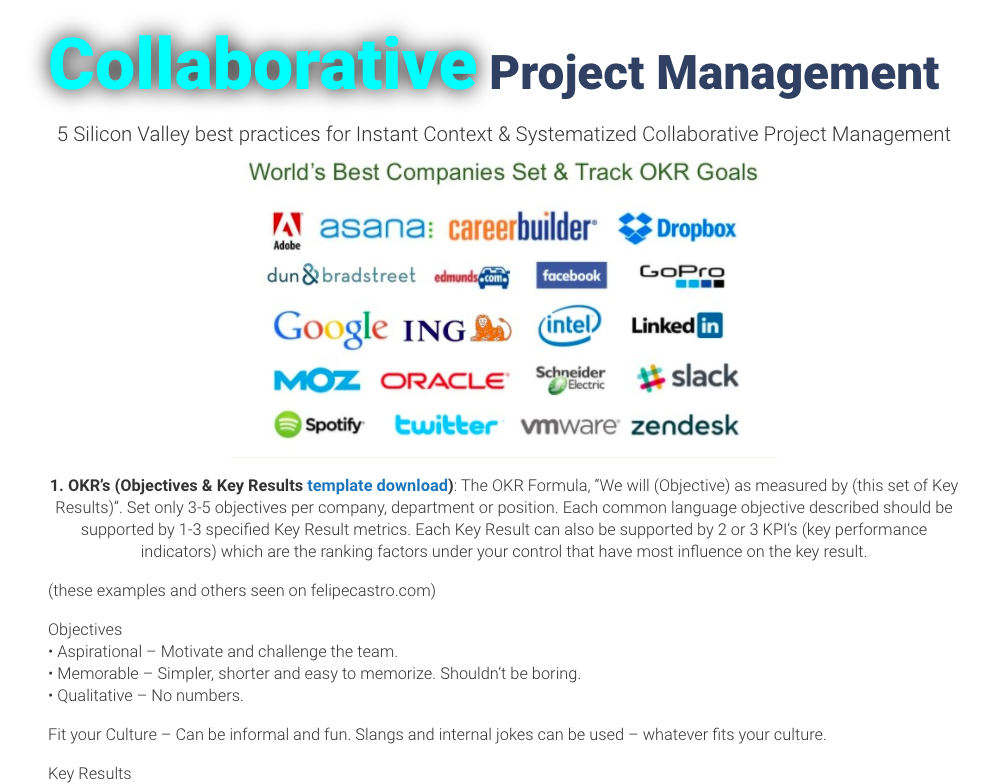
2019, January
Collaborative Project Management
5 Silicon Valley best practices for Instant Context & Systematized Collaborative Project Management.
OKR’s (download template)
Culture of Communication with CFR’s
Business Intelligence Dashboards
Use of Marketing Content Calendar & Time Blocking
Kanban Board

2019, April
Identifying Marketing Priorities
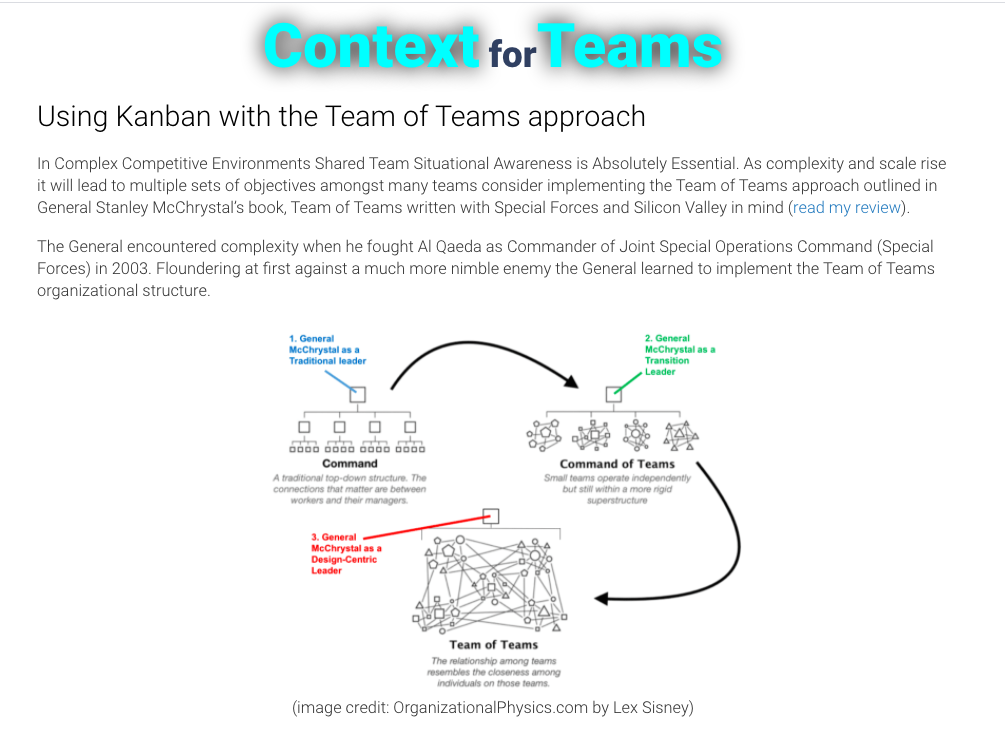
2020, February
Context for Teams Using Kanban with the Team of Teams approach
As complexity and scale rise it will lead to multiple sets of objectives amongst many teams. Consider implementing the Team of Teams approach outlined in General Stanley McChrystal’s book, Team of Teams written with Special Forces and Silicon Valley in mind.
The General encountered complexity... Floundering at first against a much more nimble enemy the General learned to implement the Team of Teams organizational structure.
Members came to understand each others objectives and resources and shared opportunities with one another and were expected to capture battlefield initiative with a high degree of autonomy.
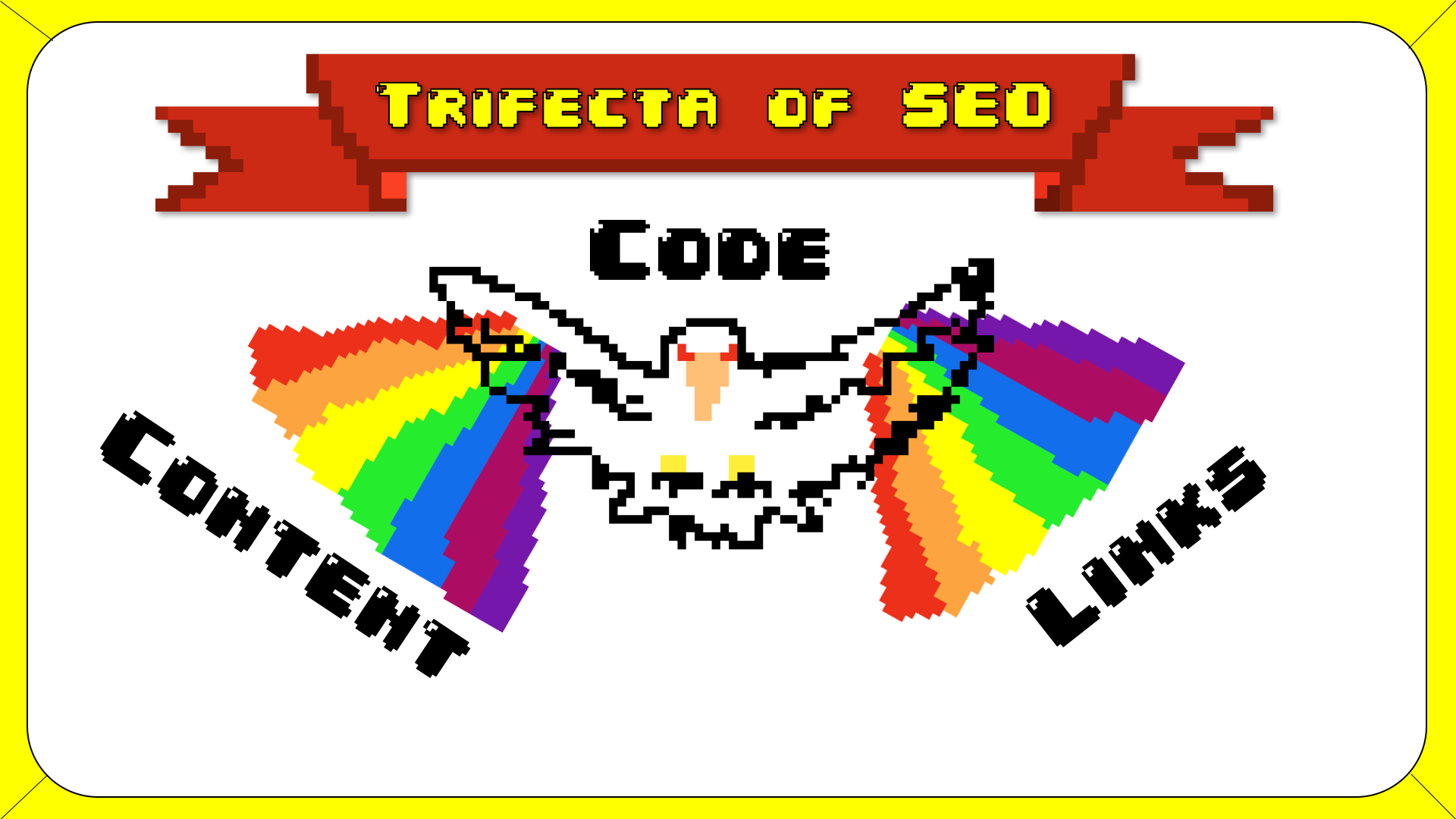
2018, November
The Trifecta of SEO
Here’s a step by step SEO Strategy guide that will help you match and outmaneuver your competition...
Principles: 80% of the value of seo will be attributed to 20% of the techniques. Focusing on these 20% and doing it well will typically mean outperforming peers on order of 1/5th of the cost or 500% the impact per dollar spent.
Consider the #1 ranked website for a given keyword receives 1,600% more traffic then #11. Both businesses may be spending the exact same budget for SEO however one website drastically outperforms. It’s not the budget or the completion of every possible SEO technique which ends up ranking one website above another... it’s the few vital techniques done well.
Posts
Categories
Online Ads
Marketplace Positioning
Project Management
Frameworks
Team Collaboration
Kanban
Implementing Agile in Teams
Marketing Priorities
Case Studies: Email
Case Studies: SEO
Case studies: Social Media
Case studies: Online Ads
Case studies: Online Scheduling



For efficient management categorize SEO operations into 3 similar sets of tasks
Here’s a step by step SEO Strategy guide that will help you match and outmaneuver your competition in each category. If you have limited resources consider Triaging the Trifecta. The greatest effect will come from the first 20% of suggested techniques and then moving onto the next category. You don’t need to make the patient 100% healthy just make sure they don’t die from hemorrhaging blood, in SEO terms this means have good code which isn’t “leaking SEO authority”, a minimum threshold of links (even if just internal link SILO’ing), and enough content that search engines will index the site for the targeted keywords (only 2-3 per page).
After this foundation the goal should be to invest as much as possible producing unique content, which is the proprietary advantage of your brand. Take diversified risks to stay out in front of trends, and maintain superior quantity and frequency of content. In SEO winner takes all.


1: Code (including hosting & development)
*Principles:
80% of the value of seo will be attributed to 20% of the techniques. Focusing on these 20% and doing it well will typically mean outperforming peers an order of 1/5th of the cost or 500% the impact per dollar spent. Consider the #1 ranked website for a given keyword receives 1,600% more traffic then #11. Both businesses may be spending the exact same budget for SEO however one website drastically outperforms. It’s not the budget or the completion of every possible SEO technique which ends up ranking one website above another... it’s the few vital techniques done well.
Hosting; must have ssl. Use server as close to audience as possible and as fast as possible.
Development; choose an existing highly rated constantly updated wordpress theme in your niche from a large public site with reviews such as themeforest.com.
Install your Digital Ecosystem, manage integrations easily with highly rated Plugins. Available for most popular marketing softwares and digital ad platforms or connect with developer at www.zapier.com. Connect your...
CRM & Email Marketing & Automation Software(s) which should also provide contact forms, email newsletter opt ins, visitor tagging & lead scoring, facebook lead ads integration (use connect.io & if crm non-compatible pay for one at www.Zapier.com) automated segmentation rules.
Google Analytics, Ads, Tag Manager, Search Console.
Facebook conversion tracking pixel.
Other Ad Platforms such as retargeting platforms like adroll or perfect audience (pro tip #1- upload your email database to these platforms too for ~70% retargeting inclusion. Pro tip #2 - integrate your ad platforms and your CRM/Marketing Automation to segment visitors and include relevant engagement data on customer profiles, create ad and email campaigns that focus on those identified hot button topics to more relevant to the individual person.
Social Media Feeds, wall posts, friends network & automated sharing utility (rss or plug in that shares content from blog and makes social media backlinks).
Other Plugin installs;
‘Yoast’ or ‘schema’ for easy meta description and schema edits and confirm google search console sitemap upload.
Accelerated Mobile Pages ‘AMP for wordpress’; (doesn’t show up in google analytics account): 40% abandonment rate for pages that take longer than 3 seconds to load Amp loads mobile pages faster and provides better mobile serp. Use the ‘Amp for wordpress’ plugin to automate this.
‘Simple 301 redirect’ for permanent redirects and for 302 temporary redirect, 401 redirects; use these plugins along with an SEO audit tool to identify and fix any link errors on site & Capture SEO juice (90%+ of rankings from domains can be transferred to new url page. Pro tip: establish your own PBN (private blog network) of aged domains with high domain authority, purchase domain install 301 redirect plugin or htaccess via ftp and capture the old domain SEO for the new url SEO.
On page Code: SEO basics checklist for every page
Title Tag; The title tag is the most important element on any web page. 6-7 words *appears on google SERP* incorporate your targeted keywords.
Meta Description; *what shows up on google search results page* along with your site title & url. 300 characters are now allowed, this is double the limit of pre 2018. SEMrush did a case study with a 36% rankings improvement by using the longer description. Pro tip: Use google search console to edit your meta descriptions of your most popular pages to correspond with the search keyword used to find that page.
H1 Heading Tag; Use targeted keyword once, H2 for sub-keywords
Internal Links and Anchor Text. SILO linking is a perfectly valid link. You can provide your own links. Expand your own private blog network of content related sights or projects, each bolstering the rankings of your main ‘money site’.
Meta keywords; Ignore.
Nofollow Links; Add as natural, compare with competition via SEMrush.com and aim for the same proportion of do-follow/non-follow links and be aware this hidden potential ranking factor.
Image Alt Tags; Great place to include local geographic keywords and supporting keywords difficult to associate with target keyword in page copy.
Canonical Tag, nullify the potential downside of search engines making the determination of seeing multiple similar pages as duplicate content, canonical tags point to the one true page you’re aiming to absorb the rank authority.
Structured Data -Schema; javascript (JSON-LD) or html (microdata) inserted in the page code which boosts SERP and enhances display with social proof such as the review stars, or a deeper ‘sidebar’ description, or event notification. Use “Schema App Structured Data” plugin for easy mass editing and Screamingfrog.com is a great free auditing tool.
NAP Consistency & Schema Wrapping: means your business's Name, Address, and Phone Number are consistently listed the same across the web (each instance is called a ‘citation’). By wrapping your on page website page NAP in Schema (preferably Json - LD) you’ll be sending a much higher quality signal to Google and other search engines about the relevance and authority of your business location (for more see Neil Patel).
Maps -besides Nap schema wrapping (see above) take the time to improve your Google Maps SEO with factors within your website to include elements such as:
embedding your Google My Business listing from Google Map
adding photos to your website using location relation meta data
adding outbound links from your website to local business resources using the Google Maps “Nearby” recommended businesses, which typically consists of restaurants, bars, and hotels
adding outbound links to local and state government websites that are related to your specific industry
include an instance of your exact business address, the one that matches your GMB listing, in the sidebar of your website so that it’s published across all pages of your websites (i.e. site wide)
14. Rank Tracking & SEO Maintenance; monitor broken links, audit redirects, duplicate content check, amp crawling and validation, errors check, disavowing spammy links. Use SEMrush.com SEO audit with recurring scans to monitor progress & use keyword tracking (make sure to geo-target your rankings).
Pro Tip #1: for objective monitoring of overall performance you only have to keep track of One Metric...Traffic Cost.
The most valuable key performance indicator of organic site traffic is the “Traffic Cost” estimate from SEMrush.com which totals the websites total organic traffic per every indexed keyword rank and multiplies that by the current CPC (cost per click) which tells you what you would have to pay if all your traffic came from Google search ads.
Compare this one strategic metric with competitors and over time. This keeps track of the big picture and keeps you from getting lost in the SEO weeds (very typical!).
Pro tip #2: refine your Traffic Cost estimate on semrush.com by excluding non-relevant keywords.

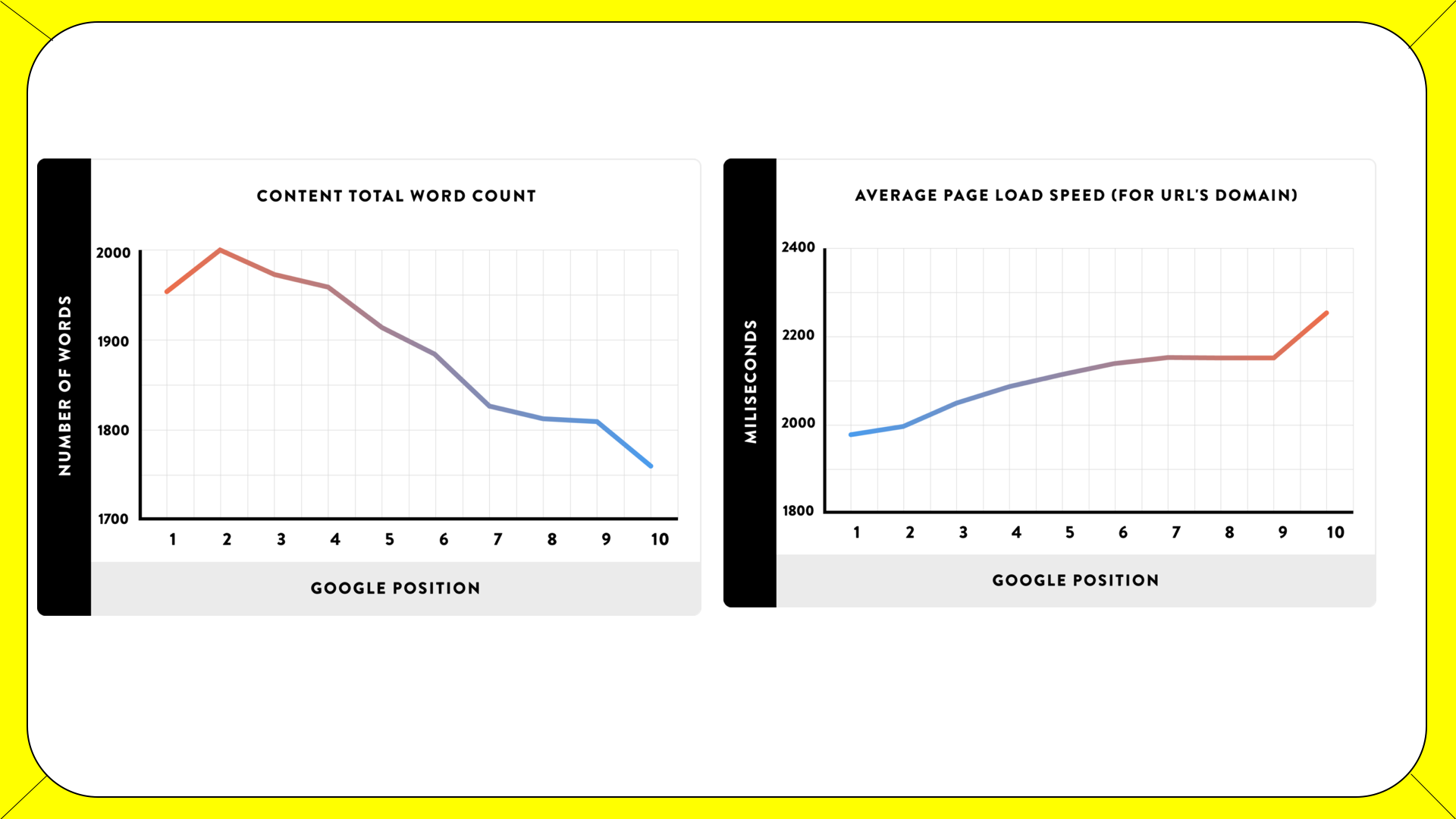
2: Links
*Principles: Competitive link analysis is critical, generally less links with higher quality are better than more low-quality links, however having a diversified portfolio of links is natural and influential for SEO rank so discover and match your competitors links with majestic.com or semrush.com link gap tool. The best links will be built over time with your best content.
On page links are completely under your control and should be systematized within a “Silo” strategy.
On every page implement the Silo internal linking structure (all links point home, not just from a menu link but a couple more times within the copy of the page specifically on targeted main and sub keywords, known as ‘anchor text’.
Social Backlinks; Integration with social bookmarking plugin can automate this. Repurpose content after it’s been posted to develop even more content.
Competitive top tier links comparison; Partner Analysis, Competitors, Associations, National and relevant niche directories, (ex. www.Allthewebsites.org free with PR5 links) industry thought leaders. (quarterly) Pro Tip: commenting on buzzsumo.com researched articles are quick easy ways to create backlinks.
Devowing high risk links use SEMrush.com to identify and disconnect negatively perceived links. Track your competitors as well for black hat SEO techniques (spam or false links, send complaint to google if you find any).
Multi-domain Private Blog Network or “microsite” Strategy; Focus on producing great niche content on a new domain with separate disconnected hosting with it’s own IP. Continually add new content and use the anchor text to link to your main ‘money’ domain OR your supporting main domain silo pages (which themselves link to your money page).
Event linking; create and submit your event calendar to yelp, facebook, myevent.com. Pro Tip: Post on your Google Maps and social media and integrations with structured data in your website.
Get Actual Users: flesh out the pipes, get free real people to visit site and spend a little time, find content and public traffic on tap from reddit posts, medium.com, etc.
301 Redirects and Old Domains: (approaching “grey hat”) do a search on expireddomains.com, find a high PR ranked domain with a healthy link profile (you can analyze profiles on majestic.com). Purchase domain and use a 301 redirect to “point” that SEO juice to Either your main site “money domain” or bolster your supporting PBN or other backlinks.

3. Content
Quantity & Quality represent two distinct content strategies. Develop a content production and distribution calendar for both strategies for a competitive edge.
*Principles: SEO is the Bear in the forest scenario, you need to outpace your competitors frequency of content, but just slightly.
Quantity content calendar.
Keep up to speed on your competitors content posts (social media, blogs) with the “perch” app or similar. Identify winners in marketplace and emulate their pace of content production. Expand your production capacity via outsourcing writers using platforms like writersaccess.com or textbroker.com, employees, local contractors, partners, yourself or audience participation.
Start with ten 1,000 word blogs related to your top keywords (2-3 per page OR whatever feels like natural language, do not ‘keyword stuff’). Link the targeted keywords to your homepage and one other blog page. Share previews, upcoming notifications and snippets of articles on your social media creating multiple links and content drops from one piece of original content. Repurpose and spin articles or write original synopsis of popular pre existing content.
Quality content calendar; be unique and add value to your audience. What is it your audience will actually find intriguing? What is your competitive advantage or insights that no one else on the market has? How can you add value to an interesting conversation? How can you bolster the brand of a partner?
Pro Tip #1: use the “Perch” app to monitor your competitors content distribution, reputation and rankings and stay on top of competitor keyword rankings change via SEMrush.com.
Pro Tip #2: Repurpose content from your current library, OR from partners OR of industry thought leaders. Examples: illustrated summaries, editorialized analogies, transcribed video (never ending free content available on your subject on youtube), or screen shot video review of industry trending content from the latest industry conventions.
Pro Tip #3: Find viral content from buzzsumo.com which will show you the viral trending content on any SEO targeted keyword.
Pro Tip #4: Develop an outreach email program via the buzzsumo.com CRM to partner with a viral author to create co-generated content you could share with all audiences.
Pro Tip #5: Blueprint how you want your outsourcing team to write your articles OR hire a creative professional
Pro Tip #6: No rigid length or format instructions are helpful for quality content production. Do something unique that people will talk about naturally and base your future production off the positive feedback.
Pro Tip #7: Unique content can be provoking be prepared and have leadership onboard.

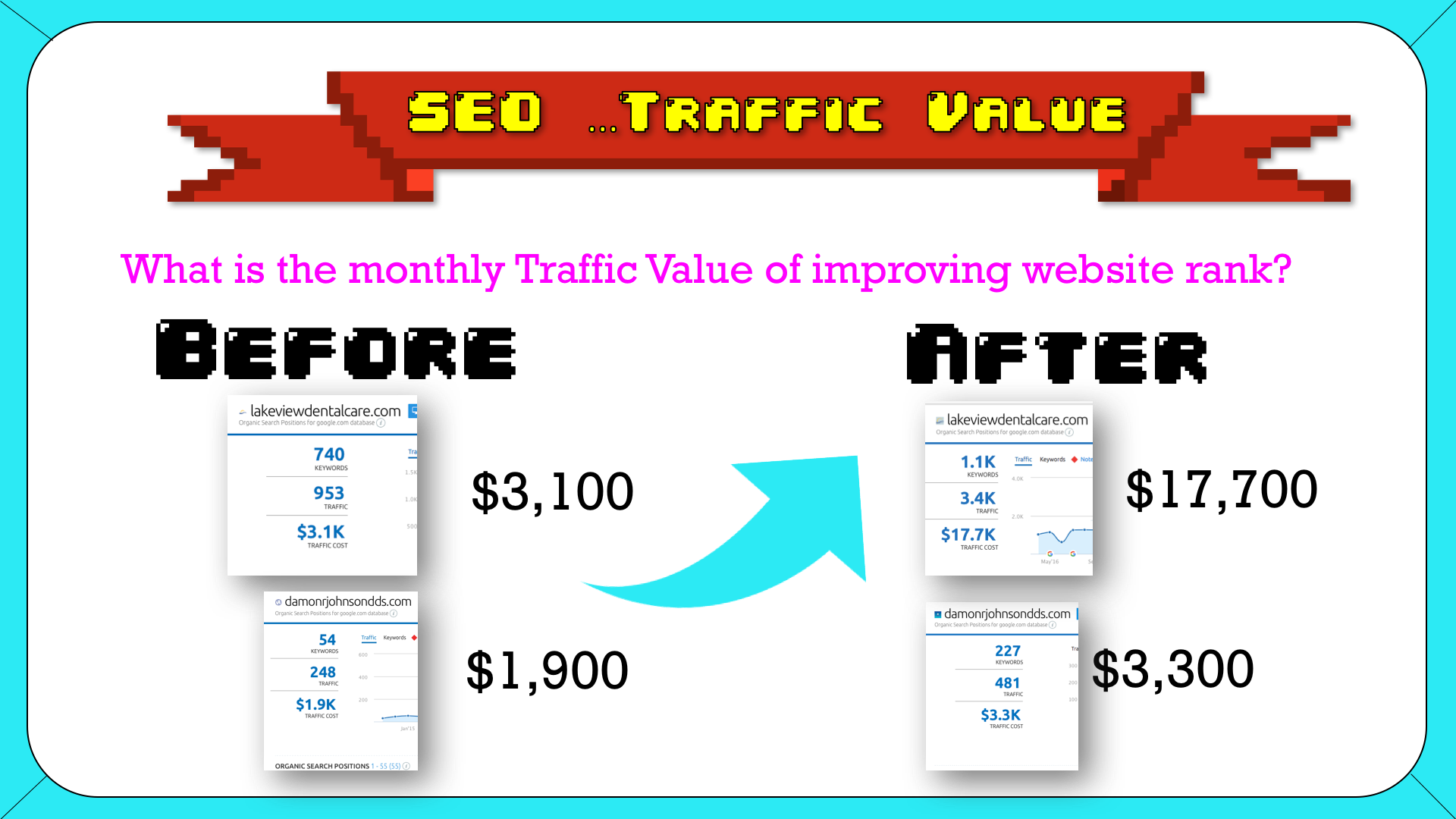
Collaborative
Project Management
5 Silicon Valley best practices for Instant Context & Systematized Collaborative Project Management
1. OKR’s (Objectives & Key Results template download): The OKR Formula, “We will (Objective) as measured by (this set of Key Results)”. Set only 3-5 objectives per company, department or position. Each common language objective described should be supported by 1-3 specified Key Result metrics. Each Key Result can also be supported by 2 or 3 KPI’s (key performance indicators) which are the ranking factors under your control that have most influence on the key result.
(these examples and others seen on felipecastro.com)
Objectives
• Aspirational – Motivate and challenge the team.
• Memorable – Simpler, shorter and easy to memorize. Shouldn’t be boring.
• Qualitative – No numbers.
Fit your Culture – Can be informal and fun. Slangs and internal jokes can be used – whatever fits your culture.
Key Results
• Quantitative – Every Key Result should have a number.
• Value based – Measure results instead of holding a list of tasks/deliverables/projects.
• Deliver results during the quarter
Hint: If you are stuck with a task, convert it in Key Results using this model: If we are successful with ________, we will have more ________ and/or less __________
Example…
Objective: Create an Awesome Customer Experience.
Key Results:
• Improve Net Promoter Score from X to Y.
• Increase Repurchase Rate from X to Y.
• Maintain Customer Acquisition cost under Y
2. Culture of Communication - two practical methods known for invigorating communication are CFR (conversation, feedback & recognition) from John Doerr’s (pioneer of OKR) Work & General Stanley McChrystal’s “Team of Teams” approach (more on this below).
Poor communication occurs naturally inside complex organizations and can harm efficiency and innovation. CFR Ritualizes a certain minimum threshold of conversation, feedback and recognition that continually keep the company culture focused on the OKR’s without overplanning.
CFR can replace more dogmatic structures rituals like the daily scrum because constant communication is already internalized. A CFR culture inoculates itself from stagnation. Progress is constantly optimized and blind spots arising from pursing objectives from only one perspective are addressed as a matter of protocol.
‘Team of Teams’ is an approach that scales communication & collaboration between multiple sets of teams. Individual team members are assigned as liaisons and meet their counterparts to share kanban status updates. Cross team coordination skyrockets. Relevant teams are continually apprised of and becoming aware of innovative collaborations (read about Team Context below).
3. Business Intelligence Dashboards - Groups need visuals for Clarity in understanding where to apply efforts, how to measure progress & when instigate change. Dashboards provide timely actionable insights accessible on the cloud allowing understanding & sharing of the important department or company level kpi’s (key performance indicators) at a glance. Dashboards transform data into transparent actionable insights especially when presented with visuals, funnels, historic performance charts etc.
Geckoboard.com or ducksboard.com are great platforms with multiple api integrations or zapier compatibility that can integrate with most data systems or directly from csv via google sheets (hint: if your software application doesn’t integrate directly to a dashboard program but you do get recurring .csv report emails consider using IFTTT.com or zapier.com to automate population into google sheets).
4. Use of Marketing Content Calendar & Time Blocking
a)Time blocking can be used to prioritize recurring investments of time into long term objectives and incremental production of major projects that don’t fit on the current week’s ‘to do list’. .
b) Marketing Content Calendars schedule marketing deliverables which can then be segmented into two types of recurring content.
1. Quality content necessitating considerable adaptability and custom scheduling. For example an in person video interview with an industry thought leader at a national industry conference to be published on the company blog and socials.
2. Quantity content which can be developed en mass and can be produced at economies of scale. For example twelve 1,000 word blog posts each containing 3 targeted local keywords.
5. Kanban Board: Kanban is a production line process that allows for an ‘at a glance’ visual understanding of the status of current and future projects. A great cloud based collaborative kanban can be managed for free at trello.com and traditionally consists of 4 columns labeled; backlog aka icebox aka queue aka wishlist, to do, doing and done.
Kanban cards (these can be sticky notes in real life) outline tasks, or ‘stories’ as Jared from Silicon Valley likes to phrase, one worker or team takes ownership of the card and the card is literally moved and positioned under the next column representing the next stage in the production process. Focus is isolated on every card until it has been completely processed and placed in the ‘done’ column representing completion.
The backlog aka wishlist aka icebox ranks priorities on collaborative consensus or executive discretion. This can be a wish list a mile long but only the curated cards on the top are prioritized. The pace at which cards move through the columns is called the work in progress limit and should be limited to fit appropriate capacity of the production team.
Trello and kanban boards are extremely flexible and can be formatted to suite particular projects.
Checklists can be created in any card and are be a great way for multiple parties to stay updated on specific projects or make remote requests, record contributions or even store assets. Checklist itemizations can be dragged up or down the checklist to fit priority.
For example multiple infield sales reps using a checklist to log requests for custom digital marketing presentations.
One alternative format great for managing remote contractors on a fixed budget or if you prefer to pay by the task, is to allow multiple remote contractors to join your board and instruct them to select their own cards which include tasks, instructions and payment.
Contractors can manage their own tasks literally moving their own cards thru the column sets allowing everyone to see the work in progress. Several columns can break down the process into parts such as a blog content production process labeling columns as; “blog outlined” “rough draft done” “final draft done” “posted to blog” etc.
A great thing about this format is that it’s easy to sustain and quality is easy to control because you don’t pay until the card/tasks are placed in the ‘reviewed & approved column’.
Another alternative format, great to use for hourly paid workers where you’re concerned about managing their time as well as tasks, is to design a to do list on your kanban like usual but use dates of pay periods as the column labels. Instruct contractors to add daily cards in that column. To measure work in progress create the initial column first card the Master Instruction Card containing a checklist of goals for the period, for example for a 10 day work period you might want to keep focus on 3 or 4 items per day or 30 itemized tasks expected for completion during the pay period.
Pro tip: use common language objectives or a voice memo and have your specialists/contractors transcribe / develop their own itemized checklists for approval.
Every card added to the column after that will come from your contractor and they can leave a detailed description and attachments to their work in that card as well as check the completed items off the column’s Master Instruction Card (this gives you a great visual on what percentage of the work is complete) & copy and paste those checked items to their daily card as a new checklist & check them. With Trello this will make it so you can see daily and pay period progress at a glance.
Strategically you can choose to include executive stakeholders or clients to subscribe to these master checklists, it’s very reassuring to be notified or be able to view appropriate progress being made on a checklist, while the tactics, daily correspondence, problems and drama associated with works in progress are isolated to the contractor card details.
Great for agencies, job hunting or even family relationships.
I may be a little over exuberant about kanban boards. I’ve taken them up to help me organize and manage every part of my life including even my relationship with my teenage daughter, god help her.
Cards can also be used to correspond with team mates, flag issues or subscribe stakeholders to updates.
Further customize your Trello kanban board by adding columns for process rules, log ins or other instructions you’d like to record for posterity. Now new hires or adding additional contractors to your production process will be a breeze.
Pro tip: have new board members study the historic change record (right hand drop down menu). This is basically the work in progress logged which can be studied for learning technique and expected pace.
You can use kanbans columns for particular obstacles over emphasizing the importance of certain steps, for instance SEO operations teams may use an entire column devoted to just gaining access to client digital platforms.
You can use kanbans for any process driven project like school work or the job hunt.
Context forTeams
Using Kanban with the Team of Teams approach
In Complex Competitive Environments Shared Team Situational Awareness is Absolutely Essential. As complexity and scale rise it will lead to multiple sets of objectives amongst many teams consider implementing the Team of Teams approach outlined in General Stanley McChrystal’s book, Team of Teams written with Special Forces and Silicon Valley in mind (read my review).
The General encountered complexity when he fought Al Qaeda as Commander of Joint Special Operations Command (Special Forces) in 2003. Floundering at first against a much more nimble enemy the General learned to implement the Team of Teams organizational structure.
(image credit: OrganizationalPhysics.com by Lex Sisney)
The General felt the resources were available however his teams lacked responsiveness, adaptability and initiative on the scale it took to defeat the enemy. The General adapted his teams, integrating deep networking of relevant teams via a liaison member to liaison member ‘mini-teams’. Members came to understand each others objectives and resources and shared opportunities with one another and were expected to capture battlefield initiative with a high degree of autonomy.
They did exactly that with dramatically increased efficiency of communication their lethality rose by an order of magnitude in terms of strikes, targets acquired, intelligence to strike time, etc.
With tech & high growth marketing the Team of Teams approach might look like this. Each company team maintains its own kanban production board (queue, to do, doing, done) and business intelligence kpi dashboard. On Fridays team members designated as liaison partners meet with their counterparts who review each others dashboards, adding colorized cards to each others kanban queue or “wish list” which informs every member on the team how best they could assist each other.
A marketing example in action... Social media team member Gale meets with SEM team member Jason every Friday. Gale’s social media team is launching a campaign recruiting female drivers to the company’s ride sharing app. The graphics are finalized but her team is still struggling with copy. Jason knows one of his Google Text Ad Extensions has particularly high engagement with females and provides this info to Gale. Gale uses it to reiterate her copy and can now avoid doing a test launch and begin immediate large scale advertising.
The Team of Teams approach breaks down barriers of communication and facilitates a cross pollination of ideas across departments and hierarchies without overwhelming other team focuses and without endless carte blanche meetings. The natural course of this structure is for team members to be empowered with more autonomy and accountability.
Context for New Hires
Learning Curves. Hard to live with them, can’t live without them. The slightest marginal improvement of learning curve slope (improved systems) or pace (processing current systems more efficiently or intensely) can have a big impact on company goals when timing is often the key differentiator of success.
Exploit the Learning Curve: systematically keep in touch with noob perspectives so the poison of bias confirmation does not feed an endless intra-organization echo chamber. Everyone has a valuable perspective, exploit it. New perspectives will uncover new opportunities. Initiate a New Hire Survey Before thorough indoctrination or training. This may be the best last chance to document a true first impression.
New Hire Surveys may be one of your best opportunities to uncover organizational blinders or company bias. Think of the Bob's in Office Space but in reverse.
Asset: Learning Curve Roadmap with short and long term priorities. Simply mentally preparing the future that will help people simultaneously learn basic and advanced training.
Know the Audience: New Hires need to understand the target audience perspective.
Demographics (Who is our customer? Gender, Age, race, marital status, income, occupation)
Geography (where does your audience spend time and flux in and out of that market which may need to be targeted in a completely new manner or language or location)
Psychographics (Why does our customer behave in the ways they do? Informs design. Personalities, lifestyles, attitudes, interests, early-middle-late adopters)
Identifying Marketing Priorities
Marketplace Context
Instructions: CB insights tool (link above) is very easy to use and features multiple categorizations and suggested market segmentations.
Market Maps provide instant context of complex competitive landscapes.
Market maps are great ways to gain rapid exposure to a broad landscape of marketplace perspectives and niche growth over time.
Create market maps without wasting hours of time on painstaking company classification, image optimizing and maintenance.
For more examples https://www.cbinsights.com/research/
Executive Directives & Frontline Insights
Asset: Team Objectives & Opportunities
Instructions: Copy the above Trello.com board to your Trello account. Invite team member stakeholders (developers, specialists, executives, contractors) ask for their contribution of 5 immediate opportunities & 3 core objectives. Trello's drag and drop card functionality will make rearranging priorities intuitive and collaborative.
Iron out discrepancies, reiterate and communicate updates at regular intervals.
Use the template and transfer the highest cards to your Project Management Kanban Queue (aka backlog aka icebox). Development/Scrum team processes these cards through the Project Management Kanban with full team transparency and support from executives & scrum masters alleviating obstacles.
Historic Context
Asset: Benchmark report with Historic KPI's
A Benchmark report shows historic and current state of kpi’s, quarterly objectives and the past years OKR performance estimate fulfillment (for example 70% of Objective Key Result reached). Transparent access to this data will facilitate accurate estimates for fulfilling future objectives.
Useful Marketing kpi’s to add...
CPL chart
CLV chart
Recurring Revenue, Total Revenue, Expenses
Audiences reached
Traffic history
Conversion Rate
Ad Quality Score
Social Media audience size
Social Media engagements
SEO traffic value (can be estimated on semrush.com)
This map instantly provides situational awareness on audience perception of marketplace brands. Instructions on template.
Competitive Research
What portion of marketing resources should be spent analyizing competitors? ...The appropriate amount of time.
Too much time and no time at all are both too extreme. Marketing that over prioritizes competitor differentiation can often be detrimental to sales. Example “Trump Ice” with it’s non-traditional red labeling (discontinued 2010).
However ignoring market trends that competitors are taking advantage of is too extreme as well and can lead to obsolescence.
“A sure way to get broke is to focus on gaining an increasing market share in a declining market”
Danny DeVito plays an independent asset management shark in the 1991 film Other Peoples Money. Asset sharks realize when companies have over invested in themselves & are moving too slowly to compete with their more nimble marketplace competitors thus overall worth would be maximized by selling the company assets off piecemeal.
Competitor Advantage or Competitor Differentiation? Finding the right balance.
The concept of MVP minimum viable product can help find a practical balance between focusing on the ‘internal value add’ versus a focus on ‘external competitive positioning’. MVP philosophy focuses on the incremental value add over the ‘perfect all in one solution’.
The accumulated current cash value of potential future net profits are summed and compared to the potential net profit available Now, by prioritizing investments into the lowest hanging fruit possible, even if that means an opportunity cost to the future.
In this way high growth companies will prioritize future market share and invest in marketing that delivers long term improvement to brand. Marketing resources should prioritize internal value adds (a real competitive advantage) over competitive positioning (audience perception of that advantage).
Low growth, cash strapped companies will prioritize investments that deliver immediate marginal profits. Marketing resources should prioritize competitive positioning seeking to capitalize on immediate low hanging fruit.
Scenario #1: High Growth Future = Low Marketing Margins Now
Competitive Map & Positioning driven marketing 17%
Internal Value Adding driven marketing 66%
Executive directives driven marketing 17%
Scenario #2: Mature Marketplaces with Low Long Term Growth = High Marketing Margins Prioritized
Competitive Map & Positioning driven marketing 66%
Internal Value Adding driven marketing 17%
Executive directives driven marketing 17%
Practical example of Internal value adding marketing... could be spending the $5,000 marketing budget on SEO related website content.
Develops more overall traffic with better organic rankings (next year)
Lowers the acquisitions cost of future traffic
Increasing margins over time, increasing control of marketplace
Practical example of competitive positioning focused marketing... could be spending the $5,000 marketing budget on search ads with competitors brand name as the targeted keyword.
Captures immediate market share
Pays for itself
Increases competition lowering margins